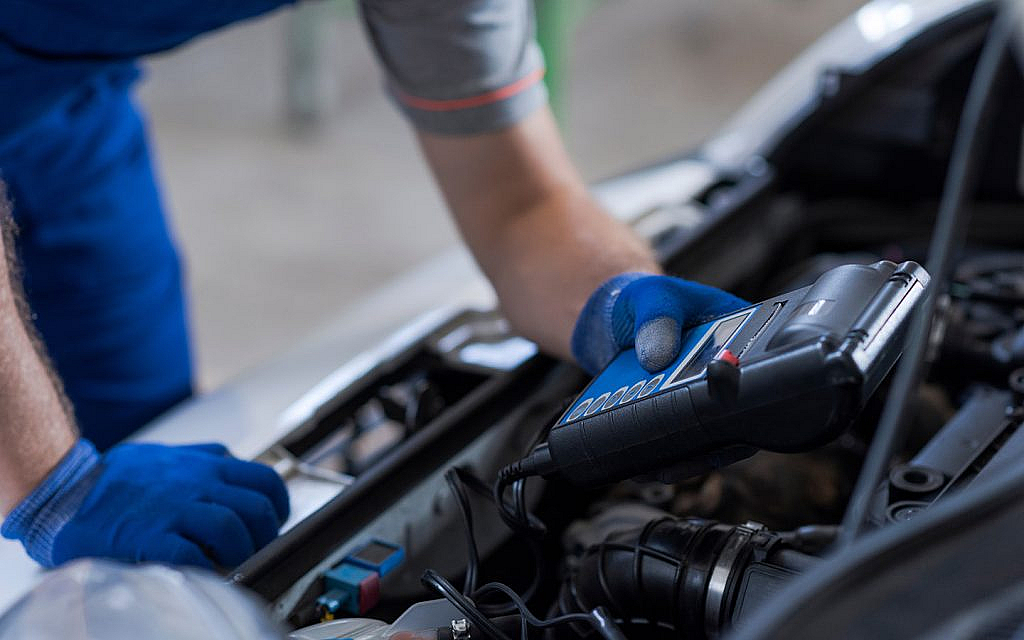Regular maintenance is an important part of owning a car, but the battery is an important part that people often forget about until it’s too late. If you are a new car owner, learning how to check a car battery is not only helpful but also necessary to avoid sudden power outages. This complete guide will show you the basic steps to check your car’s battery and ensure you have enough power to keep driving.
Why it’s Important to Check Your Car’s Battery?
The battery is the most important part of a car’s electrical system. It provides the engine with the power it needs to start and powers many other electrical components while the car is moving. A well-maintained battery is essential for starting your car and the proper functioning of the lighting, radio, air conditioning and other systems.
It is important to check your battery regularly for several reasons:
- Prevent Breakdowns: One of the main causes of car breakdowns is an empty or weak battery. Regular inspections can help you spot problems before they become problems.
- Extend the Life of Your Battery: By paying close attention to the health of your battery, you can address problems early, extending the overall life of your battery.
- Ensuring Electrical System Functionality: A healthy battery ensures that the various electrical components in your car perform optimally, making driving more enjoyable.
Tools You Need to Check Your Car’s Battery:
Before checking your car battery, have the following items ready:
- Safety Equipment: Safety should always come first. Wear gloves and goggles to stay safe around batteries.
- Battery Load Tester: This tool checks the battery’s ability to supply the required current. It is easy to find it in stores that sell auto parts.
- Battery Hydrometer: A hydrometer monitors the specific gravity of the electrolyte in a standard lead-acid battery to indicate its state of charge.
- Power Bank: If your battery is low, a power bank can help you charge it. Make sure it is suitable for the type of battery you have.
- Battery Terminal Cleaner: Keep the battery terminals clean to ensure proper connection operation. A wire brush or circuit cleaner comes in handy for this.
How to Check Your Car Battery Yourself, Step-by-Step?
Step 1: Safety
Before you start, make sure you are working in a well-ventilated area. Using batteries can release dangerous gases. So you have to go outside or use a fan.
Step 2: Turn Off the Lights and Engine
Make sure all lights and equipment are turned off and the engines are not running. Wait a few minutes for the battery to stabilize before continuing.
Step 3: Look Around and Check
Check the battery for signs of leakage, physical damage and rust. Check for cracks, bumps, or a white powdery substance around the connections. These could be signs that something is wrong.
Step 4: Clean Both Ends of the Battery
Use a wire brush or terminal cleaner to clean the battery terminals. Terminal corrosion can hinder the flow of electricity, causing poor battery performance.
Step 5: Check the Battery Voltage
Use a multimeter to find out how much charge your battery has. About 12.6 volts should indicate a fully charged battery. If the voltage is lower than 12.4 volts, it may need to be charged.
Step 6: Test the Battery Load
Follow the instructions on the package to connect the load tester to the battery. Put a load on it and look at the numbers. A good battery should maintain its energy above 9.6 volts during the test.
Step 7: Check How Much Water is in the Battery
If your standard lead-acid batteries have removable battery covers, check the amount of water in each battery. If it is not high enough, add enough purified water to cover the plate.
Step 8: Check the Water Level with a Hydrometer
Using a hydrometer, you can determine the weight of electrolyte in each cell of a standard lead-acid battery. Recommended, specific gravity levels can be found in the manufacturer’s instructions.
Step 9: Charge the Battery if Necessary
If the battery voltage is lower than recommended or if a load test indicates a weak battery, use a battery charger to charge the battery. Follow the charger’s safety instructions and tips.
Step 10: Recheck the Voltage and Load Tests
After charging, check the battery level again. Perform another load test to ensure the battery continues to function even under heavy loads.
How to Help New Owners?
- Check It Often: Checking your battery should be a regular part of your car’s maintenance. Try to do it at least once a month, or more often if the weather is bad.
- Keep the Terminals Clean: Clean your battery terminals regularly to prevent them from becoming stagnant and to ensure they have good electrical connections.
- Know the Battery Types: Lead-acid, AGM, and lithium-ion batteries all require different maintenance methods. Find out what type of battery you need to keep it safe.
- Replace an Old Battery: If your battery is a few years old or shows signs of wear and tear, you can buy a new one to avoid a sudden failure.
- Get Professional Help: If you’re unsure of your battery test results or are experiencing a problem, don’t be afraid to seek professional help.
Conclusion:
Good job! You have successfully checked the battery of your car yourself. A simple but important part of owning a car is regularly monitoring the health of your battery. As a new car owner, this skill will not only help you avoid unexpected problems, but also make your car more reliable and last longer. With a little information and the right tools, you can ensure that your car’s power source always meets the requirements. Have fun driving!
